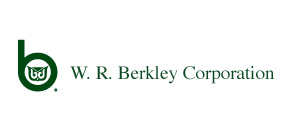The results beat Wall Street expectations. The average estimate of five analysts surveyed by Zacks Investment Research was for earnings of 61 cents per share.
The insurance company posted revenue of $1.94 billion in the period. Its adjusted revenue was $1.87 billion.
W.R. Berkley shares have climbed 19 percent since the beginning of the year. In the final minutes of trading on Tuesday, shares hit $58.53, a climb of 18 percent in the last 12 months.
The Company commented:
We are pleased with the performance of the business in the first quarter of 2019, with solid performance in both underwriting and investments and an annualized return on equity of 13.3%.
Further rate improvement contributed to steady net premium growth. We believe our rate increases are currently outpacing loss cost trend in many lines of business. Given the potential for claims inflation, we believe this is appropriate and that for several lines of business it will persist for the foreseeable future. We continue to focus on improving our combined ratio by seeking additional rate and managing both volatility and expenses. As we see the potential for additional margin improvement, we expect this will lead to greater opportunities for further growth. We remain focused on underwriting profitability and will continue to emphasize areas of the business that offer better margins.
Growth in income from the core portfolio partially offset a reduction in investment fund income. Our $27 million of realized gains on sales of investments and $42 million of change in unrealized gains on equity securities reflect our focus on total return.
Our first quarter results are a solid start to the year. The industry appears to be grappling with the reality that rate adequacy is of paramount importance. Signs of rate movement and returning discipline may be early indicators that the moment the industry has been waiting for is coming to many parts of the business. We anticipate that these trends, and consequently our results, will further improve during the balance of the year.














